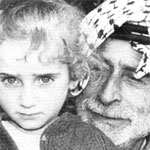|
 |
|
|
|
| Palestinian Refugees: An Overview |
|
Estimates vary of the number of Palestinians refugees displaced from within what became the borders of Israel in 1948. In 1949, the United Nations Conciliation Commission put the number at 726,000; the newly-established United Nations Relief and Works Agency subsequently put the number at 957,000 in 1950. The Israeli government has in the past suggested numbers as low as 520,000, while Palestinian researchers have suggested up to 850,000.
Regardless of the specific number, it is clear that around 80% of the Palestinians resident within what became Israel were forcibly displaced by the creation of the Jewish state. Of these, approximately one-third fled to the West Bank, another third to the Gaza Strip, and the remainder to Jordan, Syria, Lebanon or farther afield.
|
|
 |
|
TABLE 1: Distribution of UNRWA-Registered Refugees by District of Origin (June 1992)
In 1967, another 300,000 Palestinians fled
from the West Bank and Gaza, to Jordan (200,000),
Syria, Egypt and elsewhere. Of these, approximately
180,000 were first-time refugees ("displaced
persons"), while the remainder were 1948 refugees
uprooted for the second time.
Estimates put the worldwide Palestinian population at over 8 million today. In January 2010, UNRWA data showed some 4,766,670 refugees registered in its "area of operation" (West Bank, Gaza, Jordan, Syria, Lebanon). |
|
| TABLE 2: UNRWA Registered Refugees (January 2010) |
|
| |
In
Camps |
Not
in Camps |
Total |
| Jordan |
341,494 |
1,642,239 |
1,983,733 |
| West
Bank |
197,763 |
581,230 |
778,993 |
| Gaza |
502,747 |
603,448 |
1,106,195 |
| Lebanon |
226,533 |
199,107 |
425,640 |
| Syria |
127,831 |
344,278 |
472,109 |
| TOTAL |
1,396,368 |
3,370,302 |
4,766,670 |
|
|
|
The population of 1967 displaced persons stands at approximately one million (many of whom are also 1948 refugees). The overwhelming majority of these are in Jordan.
The situation of Palestinian refugees varies widely:
- In the West Bank refugees are stateless due to continued Israeli occupation and the failure to establish a Palestinian state.They live under a combination of Palestinian Authority and Israeli civil-military administration administration, in partial accordance with past peace agreements. Three-quarters of the refugees live outside of camps, and use both UNRWA and PA services. The standard of living of West Bank refugees is similar to that of the non-refugee population.
- In Gaza refugees are also stateless because of the failure of the peace process to establish an independent Palestinian state. The area is administered by the local Hamas-controlled government. Although Israel disengaged from Gaza in August 2005, it retains direct control over Gaza's airspace, coast, and most of its borders, and severly restricts access. The current Egyptian-Israeli embargo against Gaza has caused severe economic decline in the Gaza, requiring substantial humanitarian assistance (largely channeled through UNRWA).
- In Jordan, most Palestinians (excepting refugees who arrived via Gaza, and some who arrived after 1967) are full citizens, and enjoy a standard of living generally equivalent to other Jordanians. Fewer than one in eight Palestinian refugees in Jordan lives in a camp, and most camps have effectively become urban neighbourhoods.
- In Syria, Palestinian refugees are non-citizens, but are provided with full access to employment and social services. Only one quarter of the refugees still live in a camp. Their condition is generally similar to others in the country.
- Conversely, stateless Palestinians in Lebanon face numerous employment restrictions and are barred from owning property. Consequently, they generally live in adverse circumstances, often in poor and overcrowded refugee camps. Because of this, many have left the country, and the actual number of refugees in Lebanon is likely much lower than UNRWA figures--probably around 250,000. There have been some changes in Lebanese government policy since 2005, and some minor reforms were made to employment restrictions in August 2010.
- Palestinian refugees living outside of these areas are dealt with by UNHCR, rather than UNRWA. In Kuwait, most Palestinians fled or were forced to leave after the 1990-91 Gulf war. In 1995, Libya expelled many of its Palestinians in a bizarre protest against the peace process. In Iraq, many refugees faced attacks after 2003, and fled the country. In Egypt and the Gulf states, Palestinians are typically treated as foreign visitors/residents.
Following the initiation of the Middle East peace process in Madrid in 1991, the refugee issue was addressed by Palestinians, Israel, other regional parties and outside actors in a variety of political frameworks. For more detail, see: The refugees in the Middle East process.
In the context of those negotiations, as well as in work of NGOs and analysts, a number of key political issues have emerged. For more details, see: Resolving the refugee question.
|
|
|
|
 |
|
|